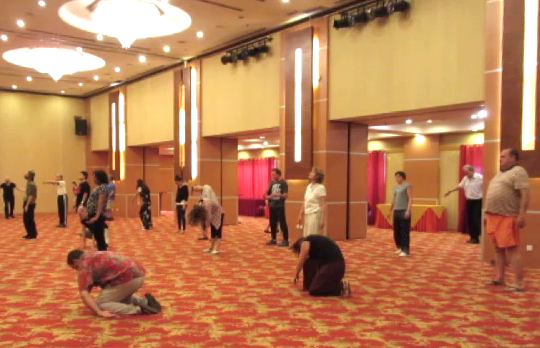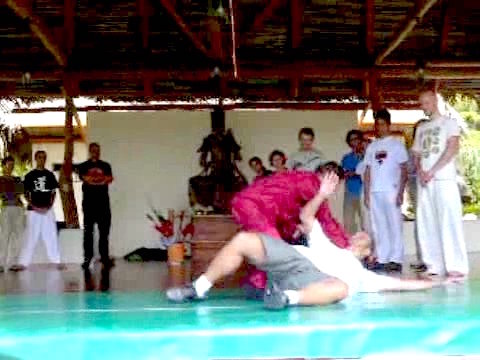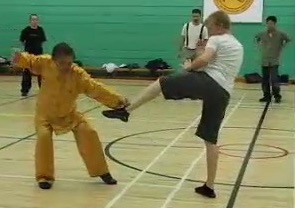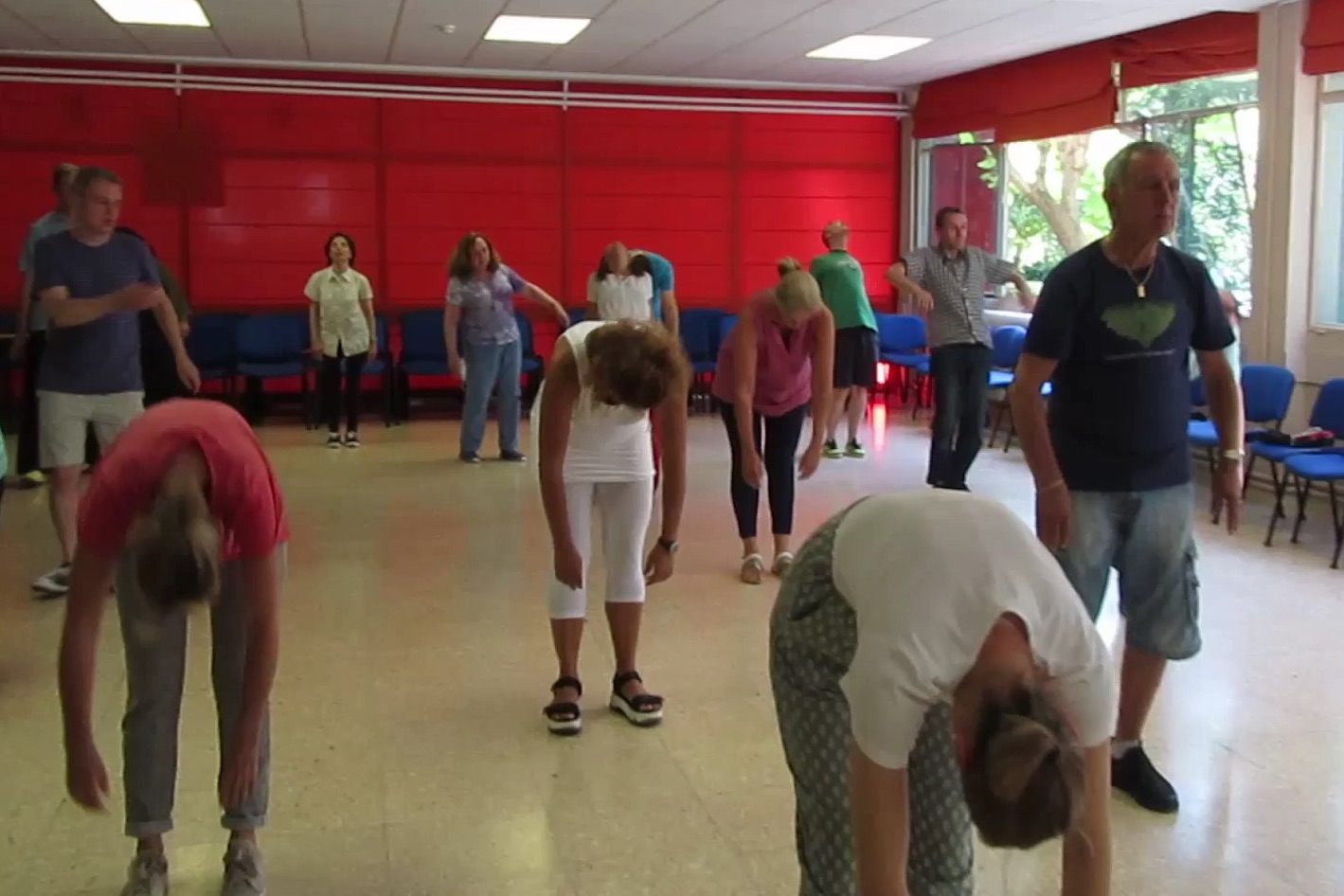SELECTION OF QUESTIONS AND ANSWERS
JUNE 2021 PART 2

An Intensive Chi Kung Course in 2019
Question 1
I bought and read Wong Kiew Kit's book, "Chi Kung for Health and Vitality", when I was a student of Traditional Chinese Medicine 15 years ago. Now I have bought the book again and read it three times and have started to practise the set of exercises.
I have looked online and found no one who has uploaded a video demonstrating the Shaolin Cosmos Dynamic Chi Kung as taught by Wong Kiew Kit. Even his own online presence has no demonstration of a full set of the ten exercises.
— Stephen, Ireland
Answer
One good reason why I have not produced videos is because the onus of chi kung is skills, and not techniques. It is the same as driving or swimming. One may learn driving or swimming techniques from good books or good videos, but unless he has the necessary skills, he cannot drive or swim.I offer an Intensive Chi Kung Course in Penang, Malaysia. I would strongly recommend you to attend one. Please check my website for available dates.
One may wonder what can be learned in a few days of an intensive course. You can learn a lot, especially chi kung skills that you may not find elsewhere. You will learn, for example, how to enter into a chi kung state of mind and to generate energy flow. Please see The Unbelievable Intensive Chi Kung Course for more information.
Question 2
Sifu, I have a question about the Taijiquan curriculum. In some of your Taijiquan web pages, you talk about students starting with Pushing Hands, then progressing to Striking Hands, and then progressing to the basic combat sequences. In looking at the Taijiquan curriculum, it looks like the progression is more blended. Is this blended approach a progression of the earlier sequential approach? Are there pros and cons to one approach vs. the other?
— Sifu Chris Didyk, Shaolin Wahnam USA
Answer
In my book, "The Complete Book of Tai Chi Chuan", I made an outlandish claim. I claimed that 90% of Taijiquan (or "Tai Chi Chuan" in English) students get less than 10% of Taijiquan benefits. I still stand by that claim.
Most Taijiquan students practice the form of Taijiquan, and worse they do not perform the form correctly in the United States, with the result that more than 60% of Taijiquan students have knee injuries. They do not have any internal force, which contributes to daily living, and do not know any combat application, which Taijiquan is famous for.
I do not really understand what you meant by a "blended" approach and a "sequential" approach. The approach I use is the best approach I offer in my teaching, and I always teach the best approach.
Many people think that when one is good at "Pushing Hands", he will be good at combat. This is not true. He must learn techniques, like in "Striking Hands". If an opponent fells a Taijiquan practitioner, and the latter does not know how to counter it, he will just fall.
"Pushing Hands" train skills, while "Striking Hands" train techniques, and skills are usually more important than techniques. In other words, the Taijiquan practitioner must be skilful in the technique he used in countering the fall. If the opponent is more skilful, the Taijiquan practitioner will still fall though he knows the technique.
Today, most Taijiquan practitioners perform "Pushing Hands" as a routine, without learning any skills. It is a great pity. A great martial art, which contributes much to good health, vitality and longevity, is now debased to a routine. But faulty Taijiquan, which we jokingly call Taiji dance, is not without its benefits. It is good for recreation, but Taiji dancers must endure the knee and other injuries which they sustain.
If we take the "blended" approach as "Pushing Hands", "Striking Hands" and "Combat Sequences" well mixed, and the "sequential" approach as only teaching "Combat Sequences", which approach would I choose depends on a few factors, like the aim and time of the teaching, and the developmental stage of the students.
I think the "sequential" approach was earlier than the "blended" approach. It started with combat sequences with Shaolin Wahnam Association, the forerunner of Shaolin Wahnam Institute, when I first composed the 12 Shaolin Basic Combat Sequences to speed up students' combat efficiency, followed by 12 Taijiquan Basic Combat Sequences.
In my teaching I often teach the Taijiquan combat sequences earlier. The combat sequences are the core of combat training. If we have unlimited time I would choose the "blenched" approach. Combat sequences will be taught in the process of "Pushing Hands" and "Striking Hands".
The pros and cons in these two approaches are that in the "sequential" approach, students will be combat efficient in a relatively short time, whereas in the "blended" approach students will derive the other 90% of Taijiquan training, other than the 10% which they may get when they train Taijiquan as an external dance. Combat efficiency is the core of any martial art training, but besides combat efficiency, students will also have good health, vitality, longevity, peak performance and spiritual joys.

A Taijiquan felling technique
Question 3
Last year, I took some online marketing courses that helped me to understand how to present my offers in a better way and how to make use of modern marketing tools and strategies. A key element of marketing nowadays is to build an email list. This could also be a good approach for you, if you like to attract new students and to nurture the connection with existing Shaolin Wahnam members. I don't need to win their trust during their first lesson, they already come with an open heart.
— Sifu Leanord Lackinger, Shaolin Wahnam Wien
Answer
Online marketing, or marketing in general, is very useful. It will attract many customers. Of course you need to find out the credentials of the advertisers.
Your website is good. Of course you can make it better.
Marketing is quite different for me. I have travelled long and far enough. That, I believe, was what my sifu meant when he told me to spread the arts to deserving students far and wide irrespective of race, culture and religion. Now I teach for the love of the arts. My cancellation of the April courses (in 2020) is for the benefits of students.
It is interesting that I have not kept an email list, though many people have suggested it. I started teaching chi kung and kungfu overseas because my sifu told me to. I believe an email list is very important.
Your teaching is good. It is important to have the students' needs at heart. Financial success and fame can come later.
Question 4
Inspired by your kind offer of the "Video Lessons for Non-Shaolin Wahnam Members", I thought about making a mini-video-course for people interested in martial arts. Of course, I'd like to ask for your permission, before taking any steps.
Answer
The "Video Lessons for Non-Shaolin Wahnam Members" is an inspiration, which followed my sifu's advise of spreading the arts far and wide. Not many people may have the good luck to become Shaolin Wahnam students. I honestly believe that they have very good karma.
But spreading the arts is more than becoming Shaolin Wahnam students. Some Shaolin Wahnam students and instructors as well as others have commented how good these webpages are.
Of course you have my blessings of the idea of spreading the arts to Non-Shaolin Wahnam students. But remember not to make the arts too high level. Most other people just perform demonstration and borrow other martial art techniques when they have to spar. They just do not have any kungfu philosophy.
Our Shaolin Wahnam arts are actually very high standard. What a typical Shaolin Wahnam member derives in a month was what I derived in a year when I was already well known in kungfu circles. There must also be a difference when students who follow your Non-Shaolin Wahnam videos become Shaolin Wahnam students.

A counter against a kick in a Non-Shaolin Wahnam Kungfu
Question 5
I would not teach meditation or chi flow. Also, I am not thinking about offering a complete online course, as the depths of the Shaolin arts should clearly be learnt in person.
Answer
Meditation is high-level, and chi flow necessitates a chi kung state of mind which most other people do not have.
Our Shaolin arts must be learnt in person. It is like learning swimming or driving techniques from good books or videos, but students cannot swim or drive. It is skills, and not techniques, that are important.
Question 6
Current Class: Learning & Teaching the Shaolin Wahnam 18 Jewels.
— James, England
Answer
The 18 Jewels is an elementary exercise. There is no need to worry about breathing, which will make students easy to learn.
Indeed, all elementary exercises do not worry about breathing; students merely perform the form. It is the form that generates chi flow. Most other chi kung exercises are elementary, but students do not realize it no matter how long they may have practiced.

The 18 Jewels
Question 7
Marketing is not an exact science, it's just a case of constantly testing until we get the right format. But all in all a great learning experience.
Answer
Marketing in any business is very important. The best paid persons are the marketers, not the general managers.
If not for marketing, any great art will just remain on the shelf; it becomes useless because it is not being used, not because it is not great.
It is great if you find marketing a learning experience.
Question 8
A student asked a question, "Is it necessary to sit down when doing the pattern, can we stand and what is the difference?"
Answer
Any exercise is best performed in its established form.
In "Immortal Takes off Shoes", which is seated, chi is focused down the legs and goes towards the feet. If we stand, chi would go elsewhere.
If you perform it standing, it becomes "Lohan Touches Toes", and chi will go to the spine, and also the legs.
I often confuse the two chi kung patterns.
In all the patterns of the Eighteen Lohan Hands, they are performed standing.
LINKS
Selected Reading
- The Wonderful Benefits of Chi Kung
- The Amazing Intensive Taijiquan Course
- Training Methods of Tiger-Claw
- Baguazhang Combat Sequences
- Fun Time in Disney World
